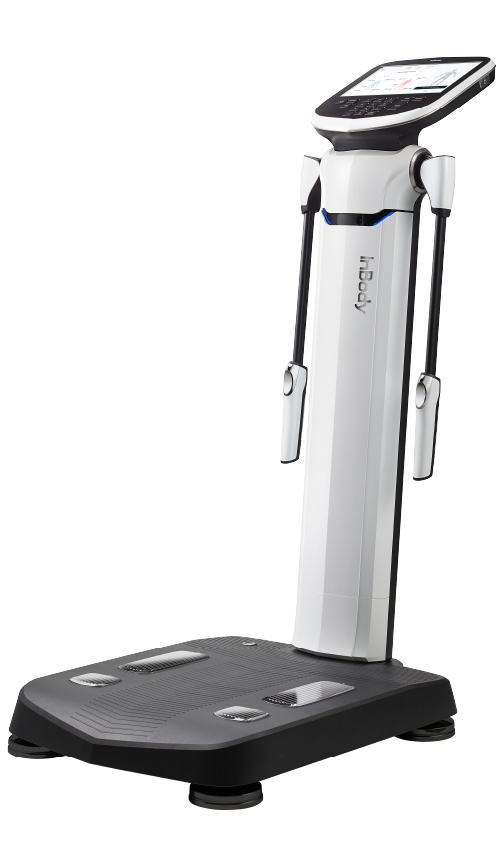The impedance is used to determine total body water (TBW), which can then be used to derive your fat-free mass—the portion of your body that does not contain fat, including your muscle and bone—and finally, body fat.
medical-grade body composition analyzers

The InBody scanner goes beyond traditional body composition analysis measuring fat, muscle and total body water. Total body water data can be divided into intracellular water and extracellular water, values important for understand a user’s fluid distribution in medical, wellness and fitness contexts.
Non-Invasive, Pain-Free Scan
Safe, low-level currents are sent through the body via hand and foot electrodes. The impedance the currents encounter are measured in order to derive body composition. InBody’s BIA technology provides accurate and consistent outputs to help you meet your fitness goals.
The impedance is used to determine total body water (TBW), which can then be used to derive your fat-free mass—the portion of your body that does not contain fat, including your muscle and bone—and finally, body fat.
Welcome to our FAQ section, where you’ll find answers to all your questions about InBody, a cutting-edge device designed to provide comprehensive body composition analysis quickly and accurately.
InBody recommends testing every 2-4 weeks.
The InBody scan takes around 45 seconds.
Because the bottom of your feet must be in direct contact with the electrodes, clothing items such as shoes, socks, stockings or leggings must be removed for accurate results.
The maximum weight limit is 551.16 lbs.
For the average population, the electrical currents sent through the body during InBody Tests are too low to feel. However, there is a small possibility that individuals with tactile sensitivity may feel a slight sensation.
People with artificial electrical implants such as a defibrillator or pacemaker are not recommended to take an InBody Test. The electrical currents of the InBody may disrupt the functionality of life-sustaining implants.
Women who are on their menstrual cycle or are pregnant are not recommended to test as they may not obtain accurate results due to subtle changes in their hydration and body water levels.
Changes in body composition reflect body status, which may be affected by factors such as disease, nutrition, hydration, and medication. Accessories such as jewelry may interfere with the electrical conductivity. Improper posture will also affect test results.
It is recommended to maintain the same testing conditions from test to test to produce high data reproducibility and comparability.